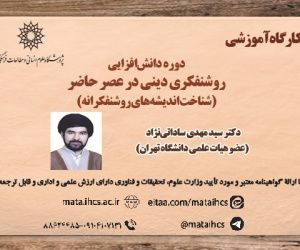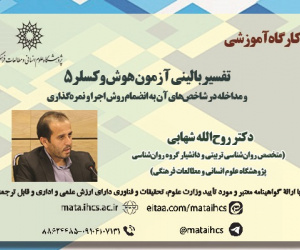طراحی و اعتبارسنجی الگویی برای بازسازی ساختار فرهنگی بر پایه منظومه فکری مقام معظم رهبری؛ رویکردی آمیخته (مقاله علمی وزارت علوم)
درجه علمی: نشریه علمی (وزارت علوم)
آرشیو
چکیده
هدف: پژوهش حاضر با هدف طراحی الگویی برای بازسازی ساختار فرهنگی کشور بر پایه منظومه فکری مقام معظم رهبری با رویکرد آمیخته انجام شد. روش: به منظور جمع آوری داده ها در بخش کیفی از مصاحبه نیمه ساختاریافته و در بخش کمّی از پرسشنامه محقق ساخته منتج از مرحله اول استفاده شد. جامعه آماری بخش کیفی، 20 نفر از اساتید دانشگاهی دارای فعالیت علمی در زمینه فرهنگ و همچنین خبرگان فرهنگی در استان اردبیل بودند که به صورت هدفمند و با روش ارجاع زنجیره ای(روش گلوله برفی) انتخاب شدند و در بخش کمّی، کلیه مدیران فرهنگی استان اردبیل به تعداد 300 نفر که بر اساس جدول مورگان تعداد 169 نفر بر اساس روش نمونه گیری تصادفی طبقه ای انتخاب شدند. یافته ها: مجموعه داده های به دست آمده بعد از طی فرایند کدگذاری های باز، محوری و انتخابی، در قالب 101 کد باز، 70 مفهوم، 15 مقوله سازماندهی شدند. نتیجه گیری: بر اساس نتایج پژوهش، زیرساختهای فرهنگی، حقوق زنان، انجام کارهای فرهنگی، توسعه شایستگی های فرهنگی، رهبری راهبردی، مقابله با جنگ نرم، صدا و سیما، عقلانیت، فرهنگ اسلامی ایرانی، فرهنگ عمومی، تمدن نوین اسلامی، ظرفیتها، مدیریت فرهنگی، بسیج عمومی و سیاستگذاری فرهنگی، به عنوان مقوله های اصلی شناسایی شدند.Designing and validating a model for rebuilding the cultural structure based on the Supreme leader’s mental system; A mixed approach
Aim: The current research is conducted with the aim of designing model for the reconstruction of the cultural structure of the country based on the intellectual system of the Supreme Leader with a mixed approach. Method: the method of the survey is as follow: In order to collect data in the qualitative part of the semi-structured interview and in the quantitative part the researcher-made questionnaire were used. The statistical population of the qualitative part was 20university professors with scientific activities in the field of culture and also cultural experts in Ardabil, who were selected purposefully and by the chain referral method (snowball method), in the quantitative part, all the cultural managers of Ardabil were 300people. 169people were selected based on Morgan's table and stratified random sampling method. Results: The obtained data sets were organized in the form of 101open codes, 70concepts, and 15categories after the process of open, central and selective coding. Conclusion: Based on the results of the research on cultural infrastructure, women's rights, doing cultural work, developing cultural competencies, strategic leadership, dealing with soft war, radio and television, rationality, Iranian Islamic culture, general culture, modern Islamic civilization, capacities, cultural management, Public mobilization and cultural policy were identified as main categories.







